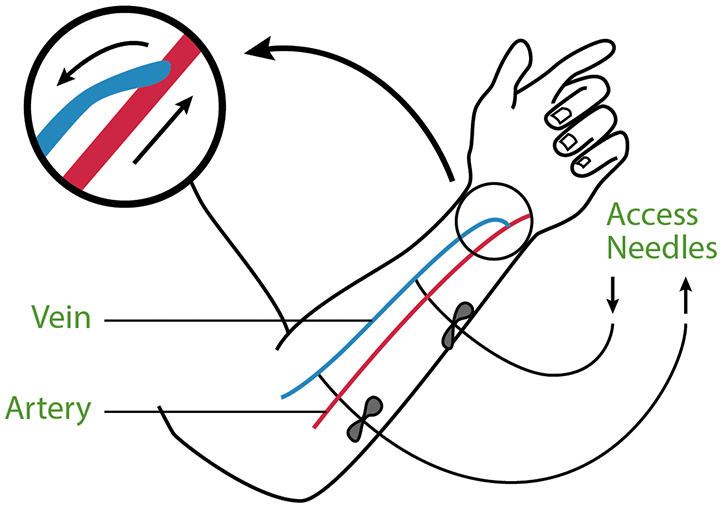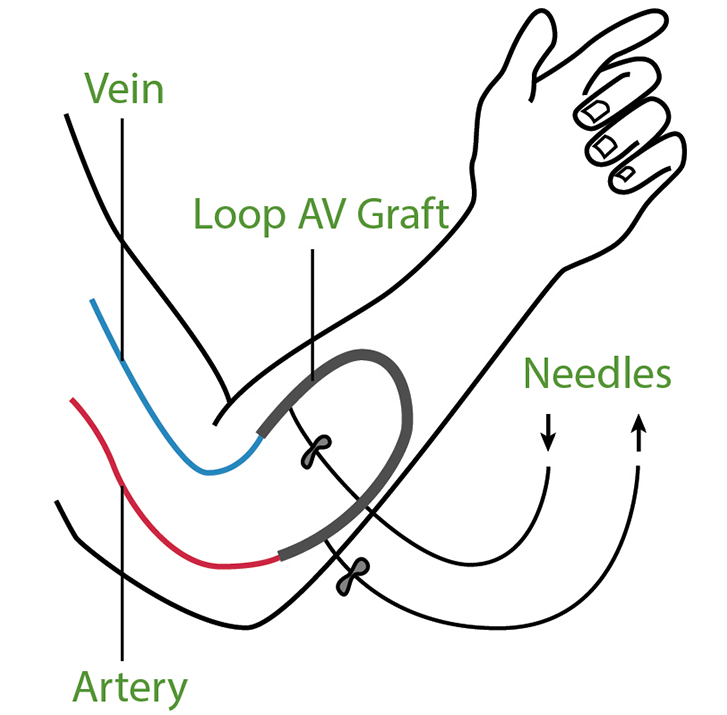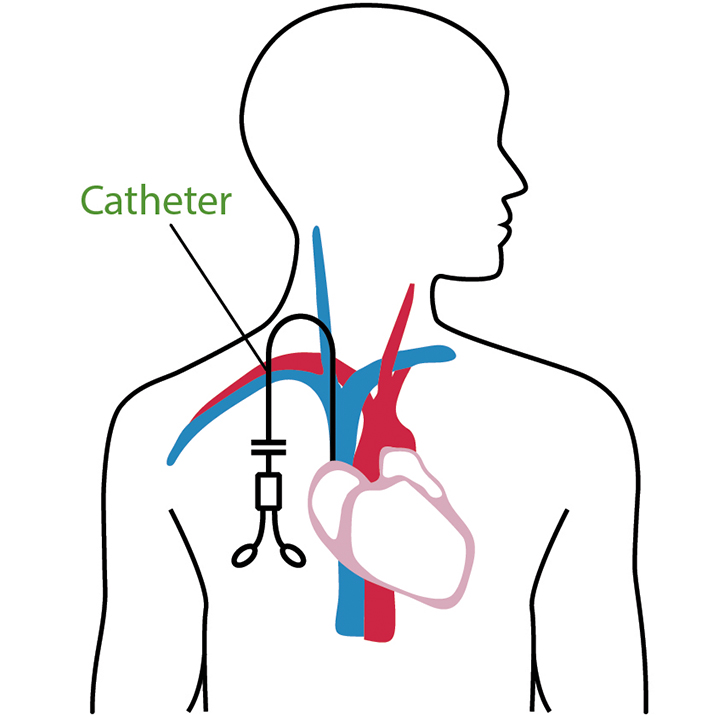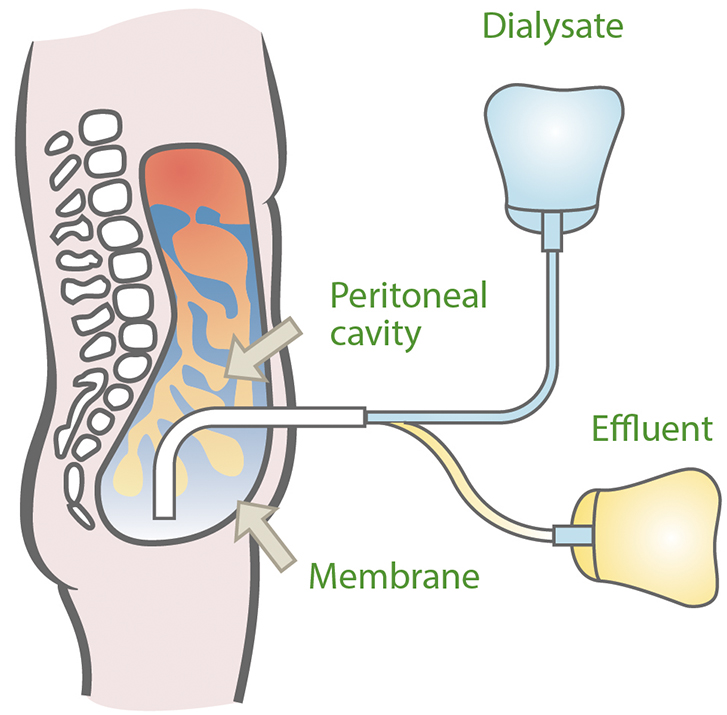Types of Body Access for Dialysis
If you will be having dialysis, you will need a body access. A body access is the place on the body that connects to a dialysis machine. The machine cleans the blood and returns it to your body through the access. Ideally, a surgeon will create the access weeks or months before dialysis begins.
The types of body access you may have are different depending on whether you are having hemodialysis or peritoneal dialysis.
Body Access for Hemodialysis
Three types of body access (vascular access) are used for hemodialysis. Your vascular access team will look at the size and suitability of your veins and arteries, also called blood vessels, to suggest the best type of access for you. The access will be created by a surgeon who specializes in blood vessel surgery. There are several types of access for hemodialysis.
Arteriovenous Fistula

Arteriovenous Graft

An arteriovenous graft, or AV graft, is an option for people whose veins are too small for an AV fistula. An AV graft involves inserting a tube to connect a vein to an artery. During hemodialysis, 2 dialysis needles are inserted into the AV graft. One needle takes the blood from the body into the machine, and the other returns the cleaned blood back into the body.
Central Venous Catheter

People who need urgent dialysis, or who are not suitable for an AV fistula or AV graft, will have a central venous catheter (also known as dialysis line). This flexible, hollow tube is inserted into a large vein in the neck, chest or groin, close to the heart. A dressing covers the area where the catheter connects to the skin. On the outside of the body, the catheter attaches to 2 ports. One takes the blood into the hemodialysis machine and the other returns the cleaned blood back into the body.
Body Access for Peritoneal Dialysis

For peritoneal dialysis, a soft plastic tube, also called a PD catheter, connects to the peritoneal cavity in the belly. The catheter is inserted by a surgeon. During dialysis, a cleansing fluid flows into the belly through the PD catheter. The fluid draws wastes from your body through a filtering process. When the filtering is finished, the fluid leaves the body through the PD catheter.
